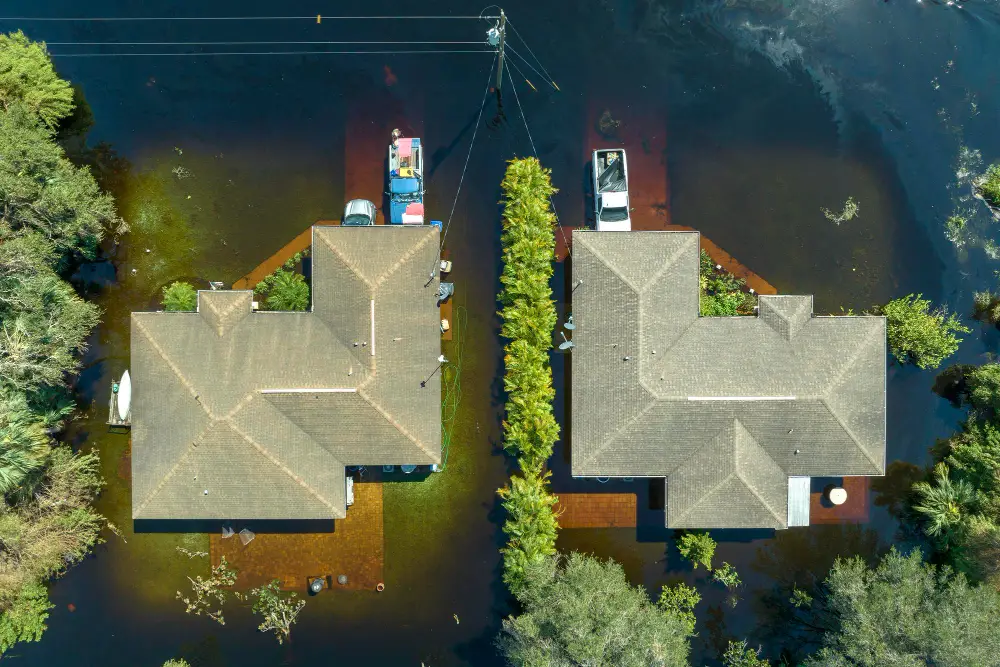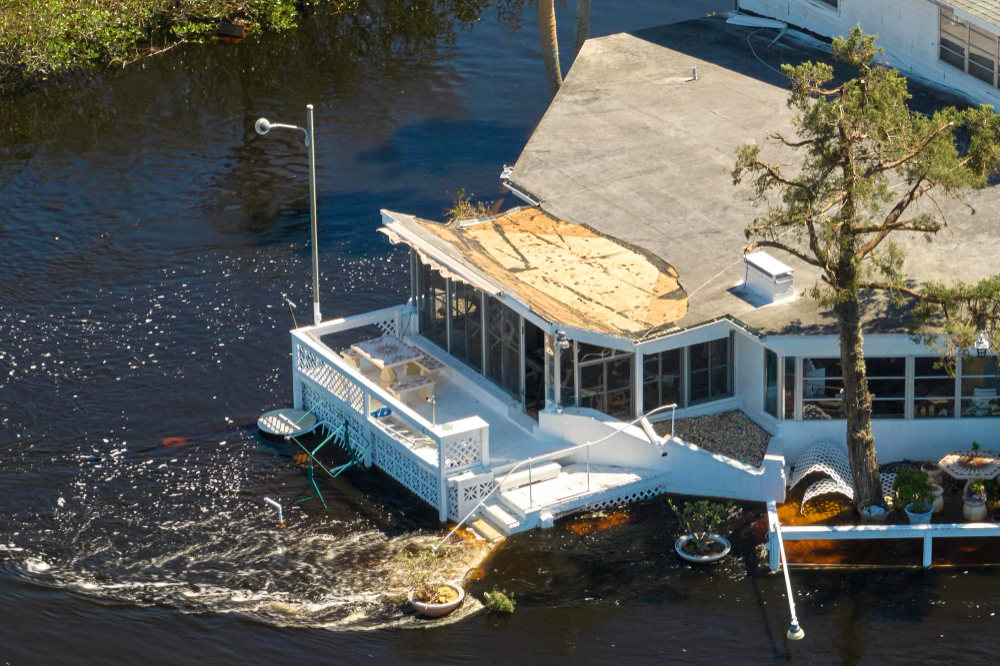Last updated on
Water damage represents one of the most common and disruptive homeowner hazards. From sudden flooding crises to overlooked slow leaks, water intrusions affect countless properties annually, causing structural issues alongside ruined possessions.
Effectively preventing water incidents requires proactive maintenance and quick response protocols when failures inevitably occur. Mastering key strategies keeps damage localized while understanding current restoration best practices helps smoothly return your spaces back to normal.
What's Inside
Causes of Water Damage

Water damage comes in many forms, from sudden flooding to slow leaks that build over time. Some of the most common causes include:
Major Storms
Hurricanes, tropical storms, flash floods, and even unusually heavy rainstorms can all overwhelm drainage infrastructure and breach property exteriors through windows, doors, and compromised envelope assemblies. Changing global weather patterns continue escalating extreme weather event frequency and severity.
Appliance Failures
Home systems, from refrigerators and dishwashers to plumbing components like water heaters and toilets, have considerable water volumes circulating under pressure. Eventually, seals perish, supply lines rupture, and mechanical components cease functioning properly, leading to sizable water release incidents.
Plumbing Problems
Faulty installation, shifting foundations, frozen pipes, and corrosion all contribute to eventual plumbing leaks stemming from supply lines, drain pipes, fittings, and water-fed appliances. Drips and full-bore ruptures stem from overlooked or aging plumbing infrastructure.
Basement Seepage
Contrary to popular belief, concrete is permeable, and basements often leak, especially older pour-in-place foundations with considerable cracking from soil settlement. Hydrostatic pressure forces water through fissures, which weep through basement walls and slab edges.
Melting Snow
Heavy snowfall followed by rapid melt leads to substantial runoff volumes exceeding a structure’s drainage capacity, resulting in water backups. Ice dams also force melted snow on upper roof areas to back up under shingles, penetrating structural assemblies.
Understanding the Stages of Water Damage
Water damage doesn’t happen overnight. It progresses through distinct stages, each requiring specific mitigation and restoration strategies. Recognizing these stages is crucial for ensuring timely intervention and minimizing damage.
Clean Water
Clean water damage refers to situations where potable water lines rupture or leak, leading to flooding with no contaminants. While inconvenient, clean water incidents cause minimal permanent damage if addressed promptly, leveraging proper drying techniques.
Gray Water
Gray water contains some impurities like soil sediments from foundation seepage or residues from washing machine discharge. Gray water soaks into porous structural materials, becoming more challenging to extract, and leaves some surface staining unless cleaned.
Black Water
Backflows from sewer lines or flooding from rivers and streams contaminated by agricultural and industrial runoff create hazardous black water conditions. This noxious fluid can contain dangerous bacteria, chemicals, and toxins, demanding strict safety protocols during mitigation.
Taking Immediate Action

The time window for mitigating water damage is crucial. Here are the essential steps to take upon discovering water intrusion:
Turn Off the Source
Locate the failing component or infrastructure breach allowing water ingress and immediately power down equipment or shut off water mains supplying the area. This might involve turning off the main home water supply line in flooding emergencies until the source is confirmed.
Contain the Spread
Block or divert water from spreading across additional areas. Deploy water dams and barriers to keep the fluid centralized. Protect unaffected regions by relocating rugs, furniture, and valuables out of pending pathways.
Remove Excess Water
Extract pooled water using wet vacuums, pumps, and absorbent mops to rapidly eliminate the bulk liquid volume. Repeat the extraction process until moisture measurements stabilize. Proper documentation helps insurance claims.
Promote Ventilation
Open windows and position fans, pulling moisture-laden air out while allowing drier exterior air to flow in. This aids evaporation crucial for restoring material equilibrium moisture content across impacted building assemblies.
Contact a Professional
Engage water damage restoration specialists to inspect, thoroughly dry, and decontaminate affected areas while documenting damage for insurance submissions. Let the experts handle proper structural repairs.
The Water Damage Restoration Process
The Chicago water damage repair process typically involves several key steps:
Assessment
Emergency response teams evaluate moisture content and contamination levels while documenting damage through photos, video and material sampling. Findings help guide appropriate response protocols for water extraction, drying, cleaning, and repairs.
Water Removal
Technicians trained in insurance industry standard best practices will systematically utilize subfloor pumping, dehumidification, and moisture mapping to extract water from materials and cavity spaces. Strict drying guidelines prevent further structural issues.
Drying and Dehumidification
Powerful desiccant and refrigerant dehumidification equipment works 24/7 to reduce ambient moisture levels enabling sufficient evaporation from saturated structural materials in properly ventilated areas. Air movers circulate air, facilitating evaporation.
Cleaning and Sanitization
Surfaces undergo cleaning using approved anti-microbial solutions tailored to material type, from hard surfaces to textiles, ensuring neutralization of any biological or chemical contaminants left behind. Odor removal techniques address stubborn smells.
Structural Repair
Impacted areas with degraded load bearing capacity or life safety performance get rebuilt leveraging mold resistant building materials installed properly to current codes. Matching undamaged aesthetic finishes blends repaired sections seamlessly.
Contents Restoration
The team triages flooded possessions to determine if specialized surface cleaning, gentle handling, and minor repairs enable restoration and continued use. Excessively water-damaged items may be deemed total losses.
5 Prevention Tips and Maintenance
Proactively avoiding water incidents involves maintaining diligent property care best practices:
- Inspect sealants, weatherstripping, and exterior barrier assemblies at least twice annually, ensuring watertight integrity and immediately addressing deficiencies
- Have a professional plumber annually inspect pipes and water-fed appliances like water heaters to catch issues before catastrophic failures occur
- Install interior and exterior flood/leak detection sensors triggering automatic water main shutoffs during detected leakage incidents
- Consider flood barriers and backflow valves to block surging flood waters
- Address cracks in poured concrete with hydraulic cements and foundation sealers to prevent seepage
When to Call the Professionals
Generally, if more than a couple of gallons of water spill affecting drywall or subfloor assemblies, engagement with water damage restoration specialists is prudent to have the situation professionally monitored during drying phases.
For both large-scale water emergencies like flooding and smaller chronic moisture issues, leveraging established experts ensures your property returns to safely habitable conditions. Locate local assistance when incidents arise to smooth the path back to normalcy.
The Takeaway
Left unchecked, water damage erodes structural integrity and nurtures dangerous microbial growth compromising homeowner safety alongside asset durability. Most consequences can remain minimized through preventative maintenance and rapid response when failure occurs.
Collaboration with water damage restoration experts offers peace of mind, helping guide reconnaissance, documented recovery procedures, and necessary repairs for your unique situation. Stay vigilant and keep their number handy to ensure you don’t endure issues longer than absolutely necessary.




